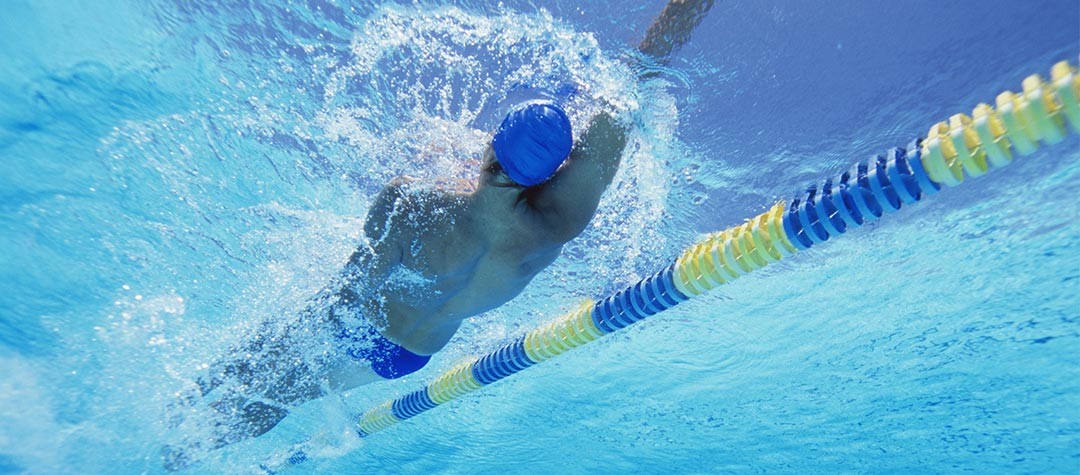Want to master the backstroke? Find out all you need to know to make your backstroke as efficient and powerful as possible.
This was my favourite stroke competing as a child. I specialised in 50 and 100 metres and I discovered, as I did in front crawl, it is not about faster arm speed. Longer efficient strokes are more effective than shorter faster ones.
Longer efficient strokes are more effective than shorter faster ones.
Head Position
Relaxed lying back in the water with eyes looking upwards in a neutral position. The aim is to keep the head as still as possible as it’s your rudder and if you lift your head, it will waste unnecessary energy as well as your hips and feet dropping causing drag.
Hand and Arms
- The hand rotate outs of the water leading with thumb or back of the hand and rotates to enter little finger first into a straight extended arm.
- The little finger enters in line with your shoulder.
- Your elbow flexes at 90 degrees and will rotate inwards with fingers pointing outwards, at this point the opposite arm starts its rotation out of the water mirroring what the other one has just done.
- After the underwater arm finishing its pull alongside your hip into extension, the arm out of the water will be entering again little finger first into extension. The power you generate will be dependent on technique stability and overall strength.
Rotation
- Similar to front crawl the hip rotation initiates the stroke allowing your hand to leave the water and extend.
- As you begin to pull back, your hips will start to rotate in the opposite direction which will take pressure off the shoulder and allow more power to be generated.
Kicking
- Keeping toes pointed and legs close together, moving through as small a surface area as possible.
- Relaxed ankles and slight bend when kicking downwards.
- In long distance I would do more of a toe flick where in shorter sprints the kick can be more vigorous from the hip.
- Please note 70 per cent of energy is used up from your legs so the more kicking you do, the faster you will get tired.
Breathing
- This should be relaxed, avoid holding your breath.
- Try breathing in as you enter little finger first and exhale as you push the water backwards.
- It helps to be consistent which will also support the rhythm of the stroke.
Starts
- Holding the block bar or side of the pool so it feels comfortable, ideally close together making it easier to interlink the hands when the arms are thrown backwards and extended.
- Feet should be shoulder width apart and you will be in the centre of the lane.
- Bend your elbows and pull your body close to the wall with chin tucked in.
- Your ankles shouldn’t touch your backside.
- You will then throw both arms backwards along with the head.
- Arch the back as much as you can to allow a back dive entry with one hand on top of the other pointing fingers downwards.
- Fingers enter first as smooth as possible trying to create as little splash.
- The arms then head follow afterwards.
- The underwater phase then starts with the butterfly kick and can vary between each swimmer before surfacing as the momentum and speed is faster underwater than on top.
- In a competitive race it has now been ruled that you can only swim a maximum of 15 metres underwater for the starts and turns. This is because records were being broken with swimmers staying under water for the majority of the race and therefore the ruling was brought in to restrict this.
Turns
Practice how many strokes to the wall before turning. Normally there are flags attached above and 5 metres away from the wall. These can be used to judge how many strokes after sighting them before rotating onto your front.
If it takes you five strokes from the flags to the wall, then you take off approximately one stroke for the turn. This will of course vary from person to person based on size and power.
- Use the lead arm to rotate you onto your front and then use the pulling arm to flip you over into a somersault with slightly bent knees, keeping chin tucked in.
- Place both feet on the wall, toes facing upwards shoulder width apart in the centre of the wall.
- Push off into a streamlined position with arms extended behind you and with one hand on top of the other.
- Carry out a number of butterfly kicks under water sending you towards the surface and back into the full stroke.















